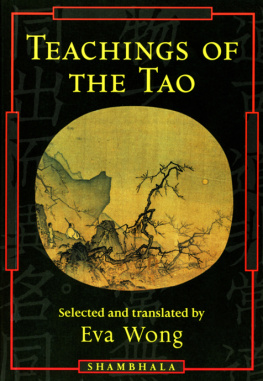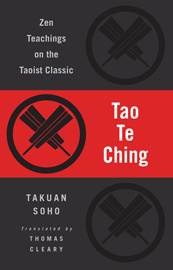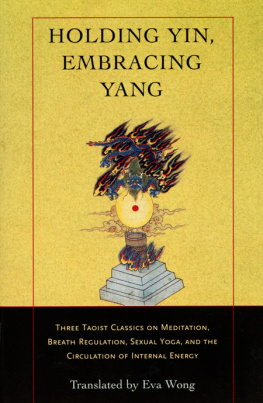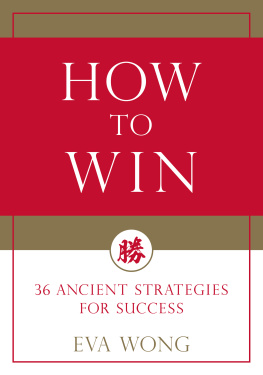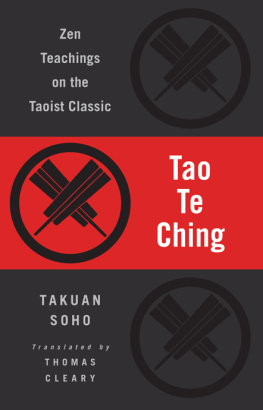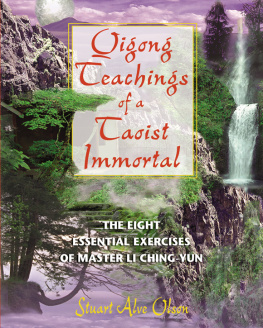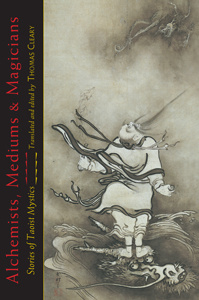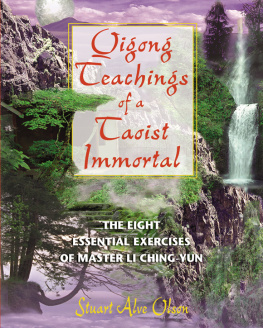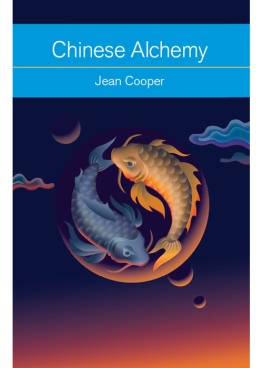ABOUT THE BOOK
The Tao that can be spoken of is not the real Way, reads a famous line from the Tao-te ching. But although the Tao cannot be described by words, words can allow us to catch a fleeting glimpse of that mysterious energy of the universe which is the source of life. The readings in this book are a beginners entre into the vast treasury of writings from the sacred Chinese tradition, consisting of original translations of excerpts from the Taoist canon. Brief introductions and notes on the translation accompany the selections from the classics; books of devotional and mystical Taoism; texts of internal alchemy; stories of Taoist immortals, magicians, and sorcerers; ethical tracts; chants and rituals; and teachings on meditation and methods of longevity.
EVA WONG is an independent scholar and a practitioner of the Taoist arts of the Pre-Celestial Way and Complete Reality lineages. She has written and translated many books on Taoism and related topics, including A Master Course in Feng-Shui; Tales of the Taoist Immortals; and Taoism: An Essential Guide.
Sign up to learn more about our books and receive special offers from Shambhala Publications.

Or visit us online to sign up at shambhala.com/eshambhala.
Teachings OF THE TAO
Readings from the Taoist Spiritual Tradition
SELECTED AND TRANSLATED BY
Eva Wong

SHAMBHALA
Boston & London
2013
SHAMBHALA PUBLICATIONS, INC.
Horticultural Hall
300 Massachusetts Avenue
Boston, Massachusetts 02115
1997 by Eva Wong
All rights reserved. No part of this book may be reproduced in any form or by any means, electronic or mechanical, including photocopying, recording, or by any information storage and retrieval system, without permission in writing from the publisher.
Library of Congress Cataloging-in-Publication Data
Teachings of the Tao: readings from the Taoist spiritual tradition / selected and translated by Eva Wong.
p. cm.
eISBN 978-0-8348-2887-2
ISBN 1-57062-245-0 (alk. paper)
I. Tao. 2. Taoism. 3. Spiritual lifeTaoism. I. Wong, Eva, 1951
B127.T3T43 1997 96-9728
299.5144dc20 CIP
BVG 01
Contents
T HE TAO THAT CAN BE SPOKEN OF IS not the real way. That which can be named is only transient. Run straight into it and you will not see its head. Follow it from behind and you will not see its back. Anyone who writes about Taoism is challenged by these statements from the Tao-te ching. However, although the Tao cannot be described by words, words can allow us to catch a fleeting glimpse of that mysterious energy of the universe which is the source of life.
The Taoist spiritual tradition is a vast ocean. Flowing into it are the indigenous beliefs of the early Chinese, the personal vision of the sages, the theories and findings of the natural and medical sciences, and influences from Buddhism and Hinduism. However, despite influences from India and Central Asia, Taoism is deeply rooted in the history and culture of China. It is a tradition that goes back several thousand years to the beginnings of Chinese civilization.
When I was growing up in Hong Kong, I received a Western education at school and a traditional Chinese education at home. I was told by my elders that it was important to know the history and the traditions of my people, and that persons who are not in touch with their tradition are like weeds blown by the wind. To me, it has always been an honor and a privilege to be taught the wisdom of my ancestors. As my understanding of Chinese history and philosophy deepened, I realized that it was in Taoism, not Buddhism or Confucianism, that the sacred and spiritual traditions of China are preserved. Confucianism may have shaped Chinese cultural behavior, but Taoism has shaped the soul and the spirit of the Chinese people.
Before I moved to the United States, I assumed naively that most Chinese were brought up with a sense of their history and their ancestral traditions. But after I settled in the U.S., I found that for many Chinese Americans, tradition only went as far as their grandparents who left China to emigrate to the New World. Now, after several generations of assimilation, many Chinese Americans want to be reconnected with the roots of their culture, especially the sacred and spiritual traditions. As they are unable to read classical Chinese, their only access to the wisdom of their ancestors is through translations. I dedicate this book to them and hope that it will help them in the journey back to their origins.
While living in the U.S., I met many Westerners who wish to experience the Taoist spiritual tradition as participants rather than study it as detached observers. I also dedicate this book to them and hope that it will help them explore and understand the spiritual tradition of a culture which is so different from their own.
The readings in this book are chosen to represent a wide range of Taoist knowledge and wisdom. They are selected from the Taoist canon and post-canon collections unless otherwise stated.
The Texts of Taoism and the Taoist Canon
The Taoist canon is the official collection of the scriptures of Taoism. The current edition of the canon consists of 1,473 volumes of texts. The earliest attempt at categorizing the Taoist texts occurred in the fifth century CE. Lu Hsiu-ching, a Taoist scholar and priest, divided the Taoist texts into seven groups. He named the three major groups of the Taoist scriptures Tung-chen (Cavern of the Realized), Tung-hsan (Cavern of the Mysterious), and Tung-shen (Cavern of the Spirit), and the four minor sections Tai-hsan (Great Mystery), Tai-ping (Great Balance), Tai-ching (Great Pure), and Cheng-i (Orthodox Classics).
In Lus system, the Tung-chen section contained the books of the Shang-ching (High Pure) School. These texts first appeared in the Eastern Chin dynasty (317420 CE). Legend says that the earliest Shang-ching texts were revealed to Yang Hsi by Lady Wei, a Taoist mystic and founder of the Shang-ching movement. The Tung-hsan section contained the Ling-pao (Sacred Spirit) scriptures. These were collected by Ko Hsan, a relative of Ko Hung, the distinguished alchemist of the fourth century CE. The Ling-pao texts are a collection of rituals, liturgies, and talismans. The third group, the Tung-shen section, contained the books known as the San-huang ching (Scriptures of the Three Lords). They are primarily magical formulae and invocations, and were reputed to have come from the Era of the Three Kingdoms (220265 CE). During the early Tang dynasty (ca. seventh century CE), the books of the San-huang ching were burned. In later compilations of the canon, their place was taken by Tao-te ching and its commentaries.
The Tai-hsan texts were reputed to have been transmitted by Lao-tzu to Wen-tzu. They include the Tao-te ching, the Chuang-tzu, the Lieh-tzu, and the Hsi-hsing ching (Scripture of Western Ascension). Most of the texts in this section are treatises on stilling the mind, cultivating longevity, and living a simple and unencumbered life. However, a twist of fate in the Tang dynasty took these books away from the Tai-hsan section and placed them in the Tung-chen group. The Tai-ping texts consist of the volumes of a monumental work called the Tai-ping ching (Classic of Peace and Balance). When Lu Hsiu-ching compiled his catalog of Taoist books in the fifth century CE, the Tai-ping ching was more voluminous than it is now. The question of its authorship is still debated, but it is most likely a text of the Eastern Han dynasty (25220 CE). It discusses the ideals of a utopian kingdom and contains talismans of healing and deliverance from disasters. The Tai-ching texts formed the earliest collection of treatises on ingesting minerals and herbs to attain immortality. The movement associated with these techniques of attaining longevity is called the External Pill (
Next page
